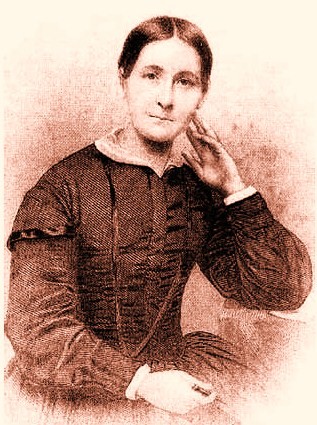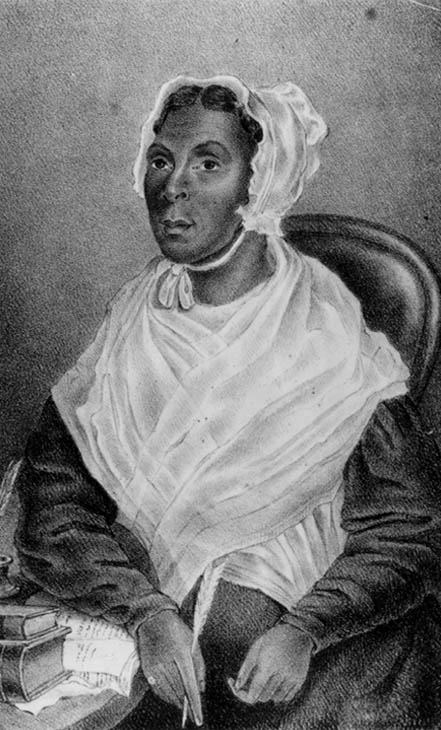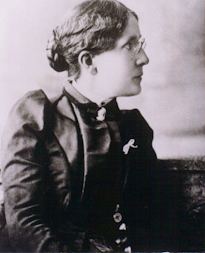Opportunities opened up for women to minister in many ways in the kingdom of God during the nineteenth century.
Historical Review – The groundwork for the great explosion of lay ministries and missionary activity in the nineteenth century was laid in the eighteenth century. Church historians remember the eighteenth century for the First and Second Great Awakenings. During the revivals many more women than men were converted. Jonathan Edwards, the great evangelist acknowledged that the majority of his parishioners were women. Women attended the Bible studies and participated in all of the church ministries. It is interesting to note that to this day in the United States women far outnumber men in our churches.
Yet to Jonathan Edwards and other eighteenth century preachers there was no place for women in public preaching and teaching. And indeed many women did not seek leadership positions in established churches. They merely wanted to serve in other capacities. In the eighteenth century this usually took the form of prayer meetings and home bible studies for children.
New Opportunities for Women — The tremendous new interest in religion that came as a result of the Great Awakenings would lead to the desire to spread the Gospel. A belief that Christ would come when the Gospel was preached to the ends of the earth prompted many to be a part of a great missionary movement within the United States and into foreign countries. Jesus said, “This gospel of the kingdom shall be preached in the whole world as a testimony to all the nations, and then the end will come.” (Matthew 24:14) This task would more easily be accomplished when all of the soldiers of Christ, including women would move out of their pews and into the world.
 Not seeking leadership positions within established churches, women began to participate in lay evangelism. The most common method of religious activity that women used would be the prayer meetings. But other female lay ministries began to flourish during the nineteenth century. Ministries included benevolent societies, Sunday schools, writing and publishing, evangelism, the temperance movement, and home and foreign missions. Women would also begin to see opportunities to serve in prisons, poor neighborhoods, hospitals, to those afflicted with alcoholism, and to prostitutes. Wherever they could share the love of Jesus as the Gospel women would find a way to minister. For the next few weeks we will look at the lives of women who served in the following areas:
Not seeking leadership positions within established churches, women began to participate in lay evangelism. The most common method of religious activity that women used would be the prayer meetings. But other female lay ministries began to flourish during the nineteenth century. Ministries included benevolent societies, Sunday schools, writing and publishing, evangelism, the temperance movement, and home and foreign missions. Women would also begin to see opportunities to serve in prisons, poor neighborhoods, hospitals, to those afflicted with alcoholism, and to prostitutes. Wherever they could share the love of Jesus as the Gospel women would find a way to minister. For the next few weeks we will look at the lives of women who served in the following areas:
Benevolent Societies – Women founded most of the benevolent societies during the nineteenth century. It has been suggested that perhaps this was because the nurturing side of women is stronger than in men. Women are more relationship oriented. They see needs and their tender natures cause them to want to meet those needs.
Many women were already involved in home mission societies. Some desired to do more than just go around asking for donations for charity. Many women wanted to be involved in the work of caring for the poor and downtrodden personally.
Sunday School Movement – Due to the overwhelming numbers of new church members, a need to educate people, young and old arose. In the United States we often think only of the Sunday School Union that took over in New York in the late nineteenth century. A common belief is that the Sunday schools were only held in churches and only taught religion to children. But early Sunday schools were very different.
Women were teaching children as well as the “lower elements of society” as lay ministers for decades before the Sunday school groups were formalized and taken over by churches. There was plenty of opposition to the women. Hannah More and her sisters founded schools for poor children and taught them the Bible and practical skills such as cooking, growing food and handling money. (See post on February 22, 2012.)
Writing and Publishing – Women refrained from seeking to preach in pulpits. But this did not stop them from writing. Actually, a woman could have much more influence through writing a story or an article that would be published in a national periodical than by speaking at a local church.
Women mainly wrote on spiritual themes. These included sanctification or holiness in living, biographies, and the justice issues of the times including poverty, abuse, temperance, and other vices. Women also wrote poetry and hymns. Today we still love the hymns of Frances Ridley Havergal (1836-79) and Fanny Crosby (1820-1915).
Evangelism – A few women led revivals and non-sectarian services. Women like Mary Savage went into poor villages where there were no churches. She was not ordained and did not serve in an established church. Nevertheless large crowds would gather to hear her speak. Other itinerant evangelists included Sally Parsons and Clarissa Danforth.
It is significant that these and other women who desired to spread the Gospel relied on a “call” to service. They did not want to enter what they saw as the man’s domain in the church but nevertheless could not disobey their call from God for service.
Jarena Lee was the first well-known woman evangelist in the African Methodist Episcopal Church.  It was important to Jarena that her call was truly of God. She did not want it to be of her own desire or to be a temptation from Satan. She recognized the devil could “transform himself into an angel of light for the purpose of deception.” The first time Jarena heard her call she was very careful to make sure it was from the Lord. She sought the Lord in prayer and her call was confirmed to her. Jarena was concerned with the lost souls of human beings. To win people for Jesus became an all-consuming passion for her. (You can read more about her and other black female evangelists on this blog in the posts of April 23; May 6, 9, 21, 27; and June 3, 2013.)
It was important to Jarena that her call was truly of God. She did not want it to be of her own desire or to be a temptation from Satan. She recognized the devil could “transform himself into an angel of light for the purpose of deception.” The first time Jarena heard her call she was very careful to make sure it was from the Lord. She sought the Lord in prayer and her call was confirmed to her. Jarena was concerned with the lost souls of human beings. To win people for Jesus became an all-consuming passion for her. (You can read more about her and other black female evangelists on this blog in the posts of April 23; May 6, 9, 21, 27; and June 3, 2013.)
Other nineteenth century evangelists include Phoebe Palmer, Catherine Booth (Salvation Army founder), and Hannah Whitall Smith, and Amanda Smith (See my post on November 24, 2011).
Temperance Movement, Home and Foreign Missions – Reformers and revivalists include Frances  Willard (Post January 23, 2013), and Susan B. Anthony (Post on March 4, 2011). These women spent their lives trying to improve the lives of others.
Willard (Post January 23, 2013), and Susan B. Anthony (Post on March 4, 2011). These women spent their lives trying to improve the lives of others.
There were so many women’s missionary societies formed in the nineteenth century that we cannot list them all here. Suffice it to say that in an article about women in mission, Marguerite Kraft stated, “Overall, probably two-thirds of the missions force has been, and currently is, female.” The women’s missionary societies were eventually taken over by men in the early twentieth century. Most women were glad when men became involved. Again, they did not seek leadership positions; they only wanted to be allowed to spread the gospel and serve Christ by serving others.
Taking the Gospel to the lost was the paramount thought on women’s minds in the nineteenth century. Though women did not seek leadership positions in the established denominational churches, they did accomplish much with their organizational work in lay areas. Benevolent societies, social welfare, the early Sunday school, and especially missions became a sphere in which women became actively involved like never before in history.
In the coming weeks we will look at the lives of some of the women who brought lasting change to the kingdom of God during the nineteenth century.

